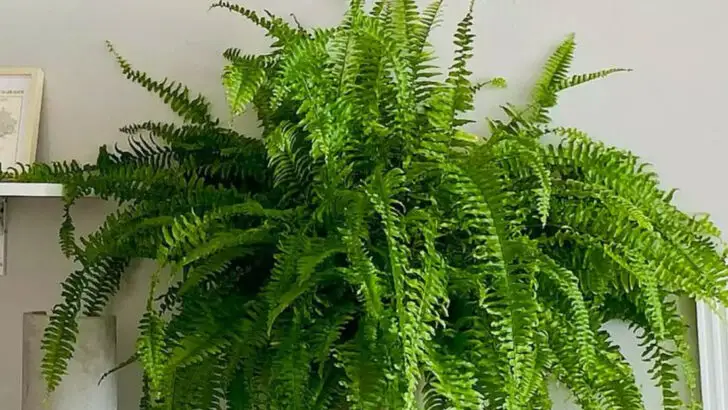When it comes to adding lush greenery and natural elegance to your garden or shaded corners, it’s easy to get swept up in the allure of exotic plants. But some of the most striking, resilient, and low-maintenance ferns are actually the ones that have been here all along—native species that have evolved to thrive in your local climate.
These 15 native ferns don’t just survive—they outperform their imported counterparts in adaptability, drought resistance, and even visual appeal. With textures that range from delicate fronds to bold, architectural fans, they add layered interest to woodland gardens, shady pathways, and even modern interiors. Best of all, most require little to no special care once established.
Whether you’re looking to fill a difficult spot, reduce garden upkeep, or simply embrace plants that work in harmony with your local ecosystem, these native ferns prove that you don’t have to go far to find something truly extraordinary. Your garden will look more vibrant—and be better for the environment too.
Maidenhair Fern

With its delicate, fan-shaped fronds, the Maidenhair Fern captures the essence of ethereal beauty. This fern thrives in shaded woodlands, offering a serene aesthetic to any garden it graces. Its soft, arching leaves create an enchanting contrast against darker foliage.
Did you know? This fern gets its name from the fine, hair-like roots that support its graceful structure. Its preference for humid environments makes it ideal for shaded garden corners or indoor terrariums.
For those seeking a subtle yet striking addition, the Maidenhair Fern is a timeless choice.
Boston Fern
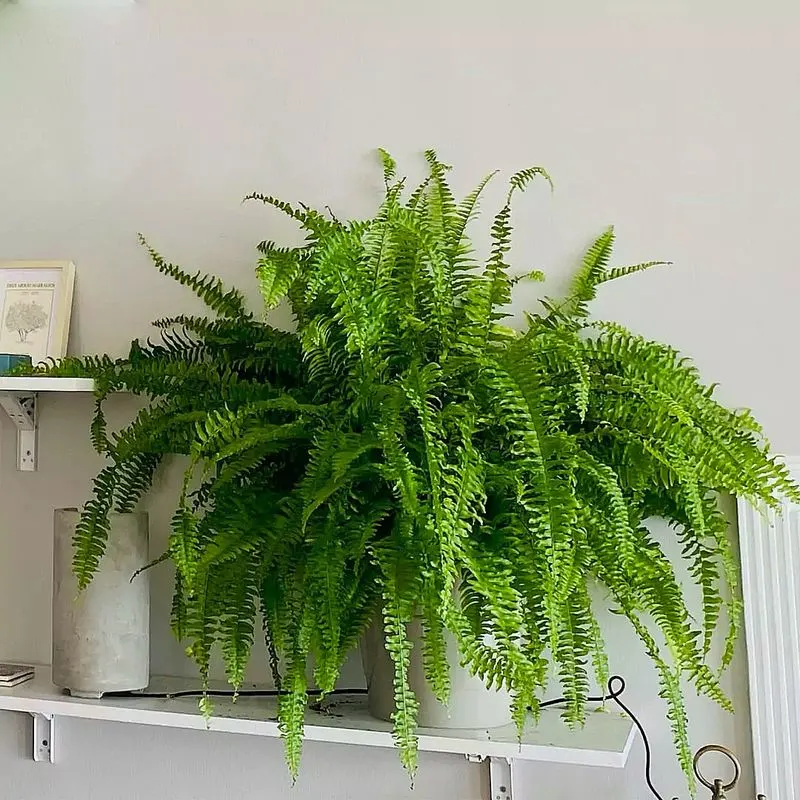
The Boston Fern is a vision of lush greenery with fronds that seem to cascade effortlessly. This fern is a staple in many homes, known for its air-purifying qualities. Its ability to thrive in indirect light makes it a versatile choice for indoor spaces.
Historically, Boston Ferns gained popularity during the Victorian era, becoming a symbol of elegance in parlors and conservatories. Today, they remain a favorite for adding a touch of vintage charm.
For those looking to combine beauty with function, the Boston Fern is an ideal candidate.
Lady Fern

Elegance personified, the Lady Fern stands out with its finely cut, bright green fronds. This fern thrives in moist, well-drained soil and can light up shaded garden areas. Its graceful appearance makes it a favorite among gardeners seeking a touch of sophistication.
One unique trait is its ability to adapt, flourishing even in less-than-ideal conditions. This resilience makes it a reliable choice for novice gardeners.
Whether nestled in a woodland garden or a container, the Lady Fern offers charm and adaptability.
Bracken Fern
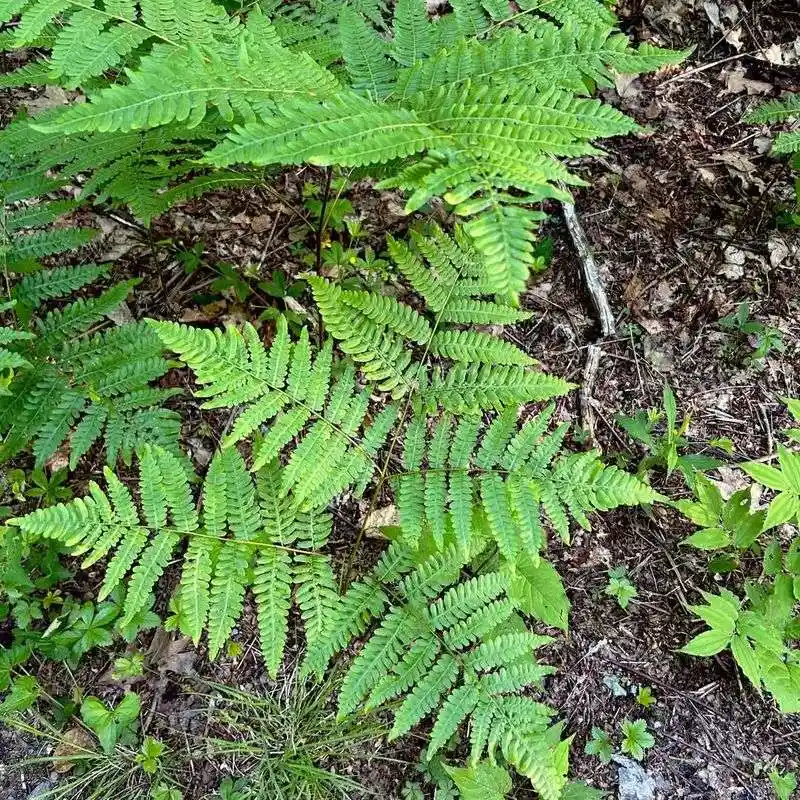
Known for its robust nature, the Bracken Fern can rise tall, making a statement in any landscape. Its triangular fronds thrive in a variety of conditions, from sun-dappled meadows to shaded forest floors. This versatility is one of its greatest strengths.
Bracken Ferns have been part of traditional uses, including as a food source in some cultures. However, caution is advised as some parts can be toxic if not prepared correctly.
When planted thoughtfully, Bracken Ferns can bring a wild, natural feel to gardens.
Ostrich Fern

The Ostrich Fern captivates with its tall, feather-like fronds, reminiscent of its namesake. Preferring moist, shaded areas, it can grow quite large, providing excellent ground cover. Its striking appearance makes it a focal point in any garden setting.
This fern is also known for its edible fiddleheads, a spring delicacy in many regions. As it unfurls, the Ostrich Fern brings both beauty and culinary value.
For gardeners wanting to combine aesthetics with a touch of utility, this fern is a perfect fit.
Cinnamon Fern
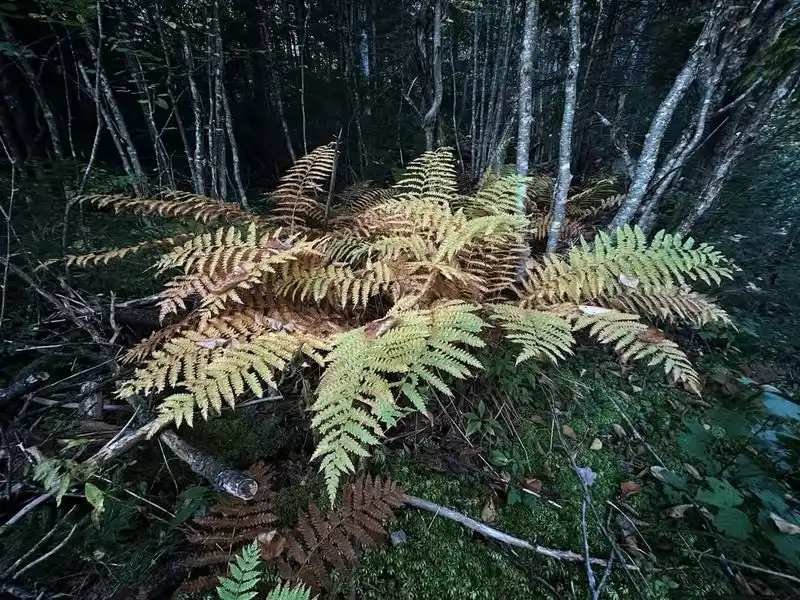
Standing out with its cinnamon-colored fronds, the Cinnamon Fern adds a unique hue to the garden palette. It thrives in damp, wooded areas and can grow impressively tall.
An interesting fact: its name comes not from the plant’s scent but from the color of its fertile fronds. These fronds provide a striking contrast against the plant’s green foliage.
The Cinnamon Fern is a great choice for those looking to introduce varied textures and colors into their garden.
Royal Fern
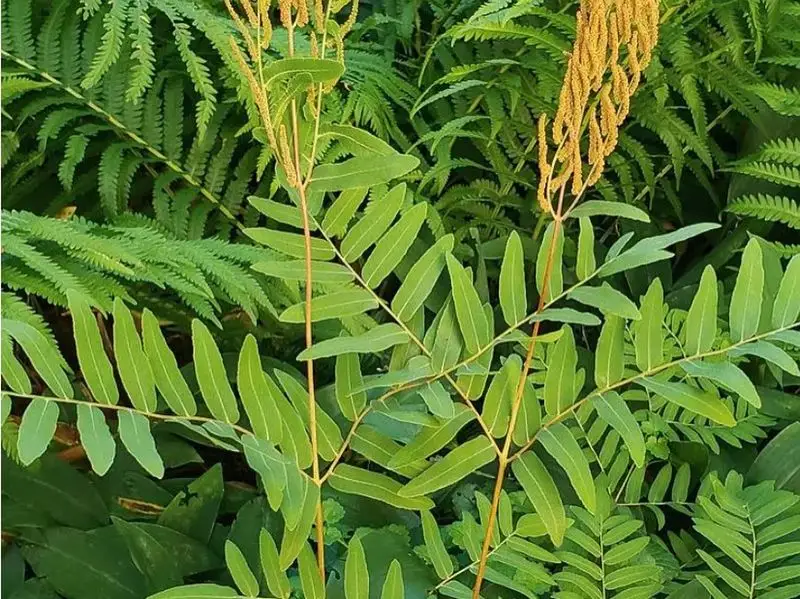
The Royal Fern truly lives up to its name, exuding an air of grandeur with its broad, bright green fronds. It prefers wet, boggy areas, making it perfect for planting near ponds or streams.
What sets this fern apart is its ability to tolerate more sunlight than most other ferns. This adaptability allows it to shine in diverse garden locations.
For a touch of regal elegance, the Royal Fern offers a majestic appearance that few plants can match.
Christmas Fern
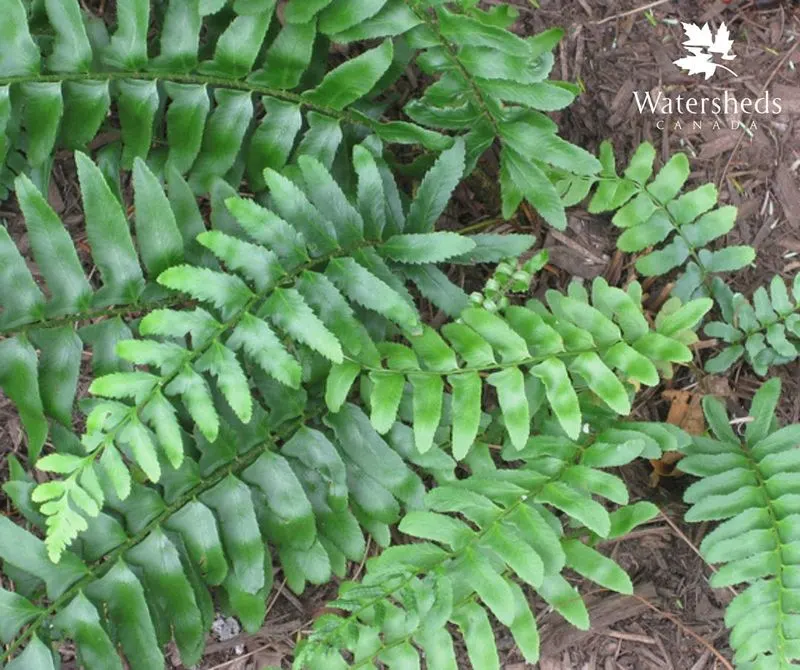
Evergreen through the winter, the Christmas Fern is a symbol of resilience and life. Its dark green, leathery fronds maintain their vibrancy even in the coldest months.
This fern’s adaptability to both dry and moist conditions makes it a versatile garden choice. It can be used to add texture and color to garden beds year-round.
For a plant that offers beauty across seasons, the Christmas Fern is an enduring favorite.
Sensitive Fern

Despite its name, the Sensitive Fern is far from fragile. It thrives in wetlands, showcasing large, lush fronds that bring a tropical feel to temperate gardens. Its tolerance for wet conditions makes it ideal for areas prone to flooding.
Interestingly, this fern’s name comes from its tendency to wither after the first frost. However, its rapid growth in spring ensures it quickly rebounds.
For gardeners seeking robust greenery that can handle wet feet, the Sensitive Fern is an excellent choice.
Hay-Scented Fern
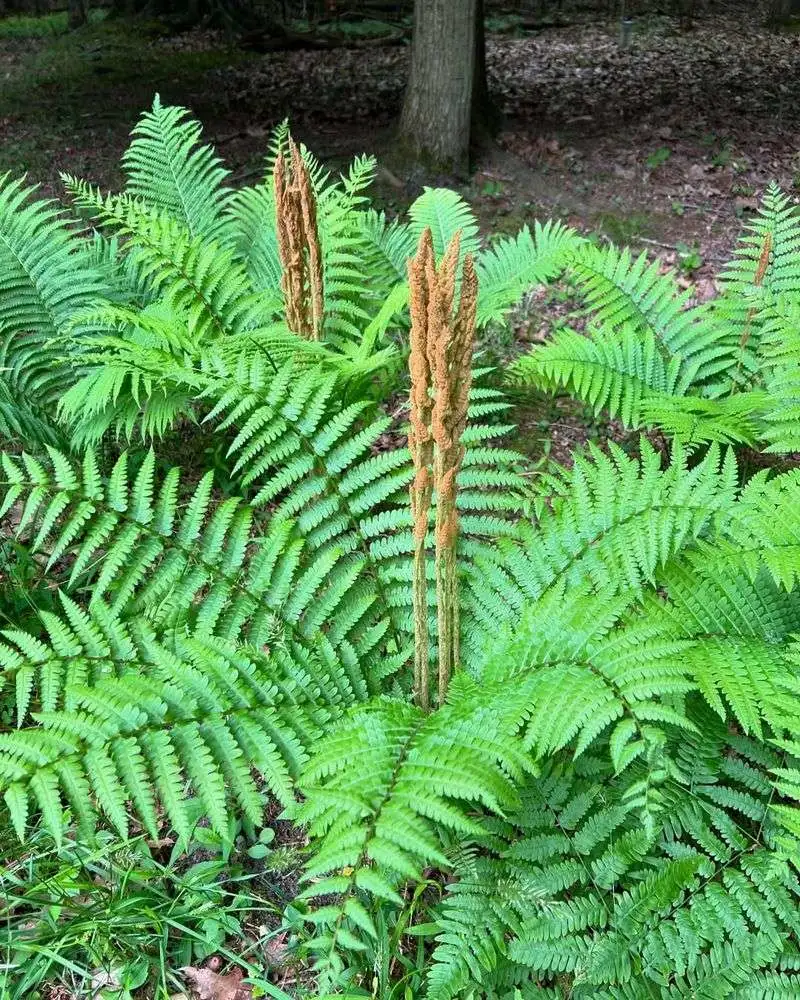
The Hay-Scented Fern is known for its delicate, light green fronds that release a pleasant aroma when brushed. It thrives in sunlit meadows and woodland edges, creating a soft, carpet-like effect.
Beyond its ornamental appeal, this fern is also effective at deterring deer, making it practical for gardens plagued by these visitors.
For a fragrant and functional addition, the Hay-Scented Fern offers both beauty and utility.
Interrupted Fern

Characterized by its unique frond structure, the Interrupted Fern adds intrigue to any garden space. The “interruption” refers to the fertile sections that appear midway up the frond.
This fern prefers shaded areas and can create a striking backdrop with its tall, lush fronds. It’s a great choice for adding height and interest to fern collections.
For a garden that sparks curiosity, the Interrupted Fern is a standout choice.
Holly Fern
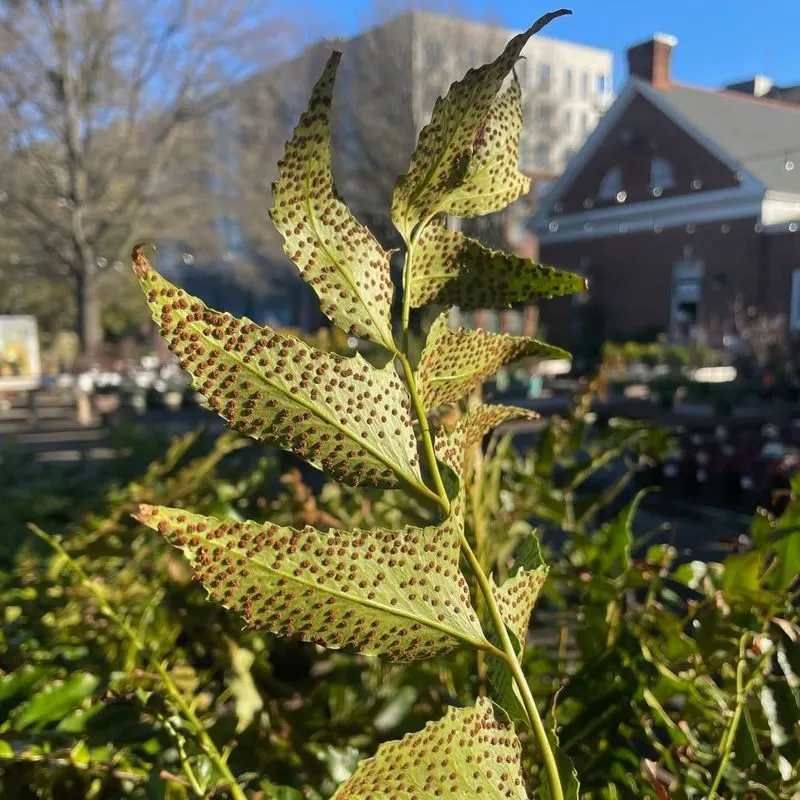
Shiny, leathery fronds distinguish the Holly Fern, making it a standout in shaded garden corners. Its evergreen nature ensures it remains a vibrant fixture even in winter months.
Unlike many ferns, it tolerates dry conditions, offering flexibility in planting locations. Its resemblance to holly leaves adds a touch of festive charm without the thorns.
For those seeking robust greenery with a hint of holiday spirit, the Holly Fern is a delightful choice.
Japanese Painted Fern
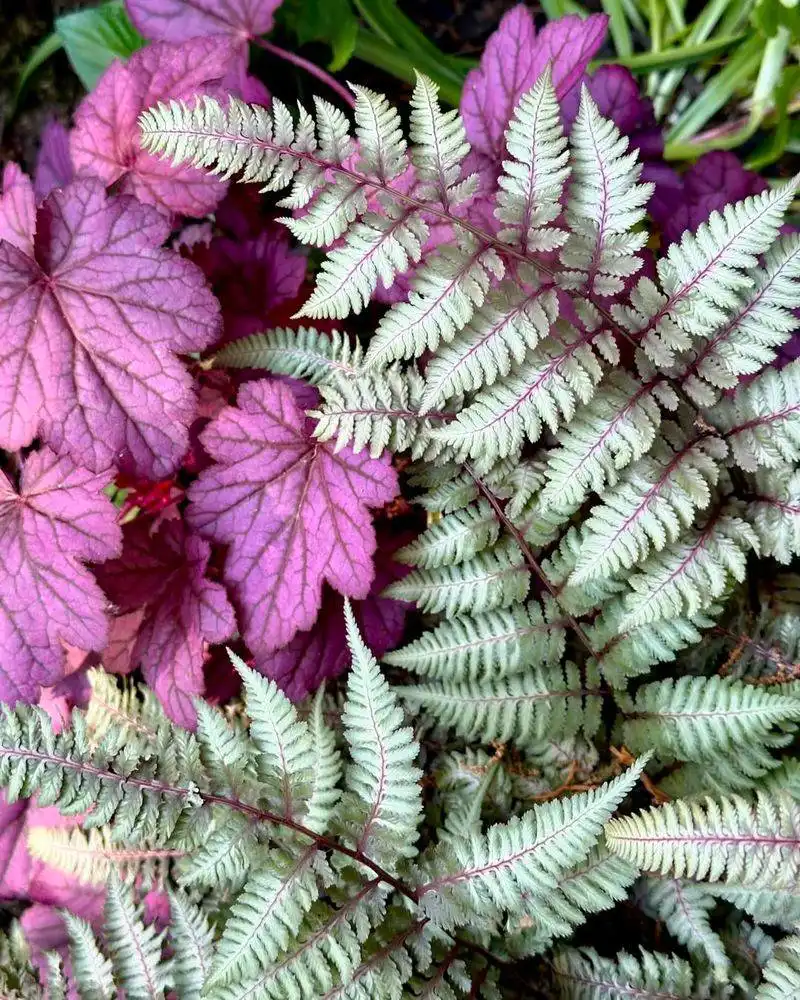
The Japanese Painted Fern dazzles with its silvery, metallic fronds that seem to capture moonlight. These ferns thrive in shaded or partially shaded areas, adding a unique color palette to gardens.
Each frond appears hand-painted, with subtle shades of green, silver, and purple. This artistic appearance makes it a favorite for adding visual interest.
To introduce a touch of artistry to your garden, the Japanese Painted Fern is a perfect selection.
Staghorn Fern

With its antler-like fronds, the Staghorn Fern breaks the mold of traditional ferns. It’s often mounted on plaques or grown in hanging baskets, serving as a living piece of art.
This fern prefers bright, indirect light and high humidity, making it perfect for bathrooms or indoor patios. Its striking form and unusual growth habit make it a conversation starter.
For an eye-catching, sculptural addition to interiors, the Staghorn Fern is unparalleled.

